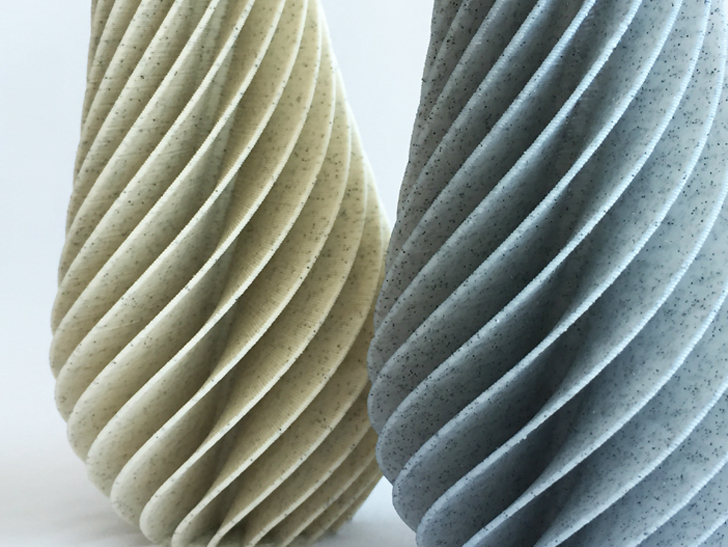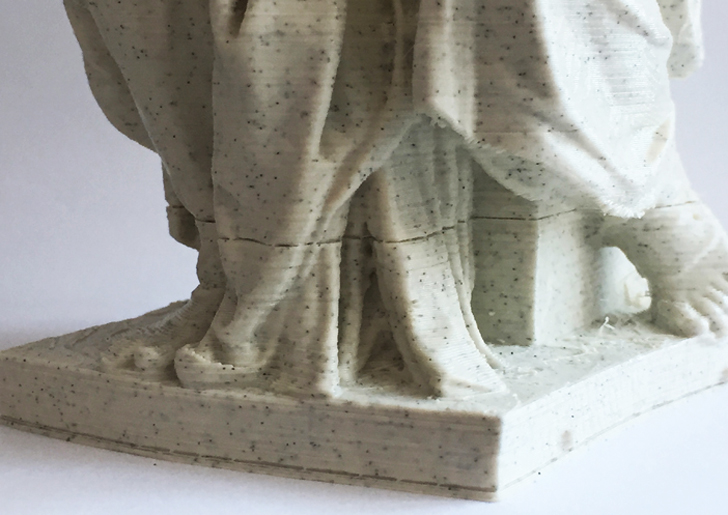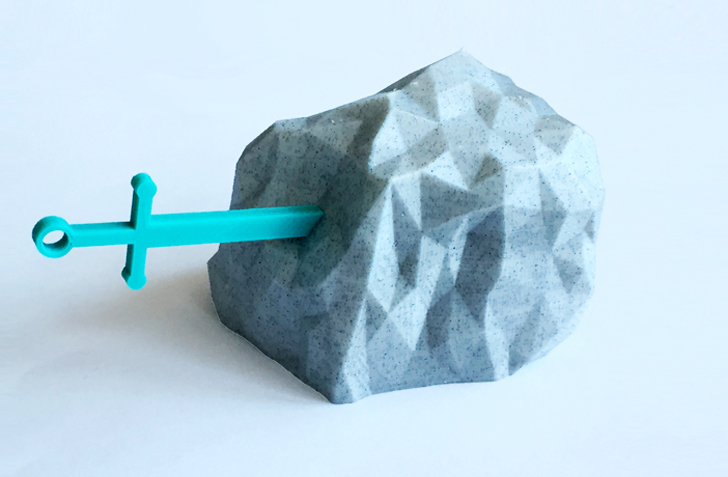Spectrum Filaments is a relatively young company in the 3D printing filaments market, but has gained considerable popularity in a quite a short time thanks to its products, which combine high quality with a very attractive price. Their materials portfolio grows rapidly with almost every month, and what’s more, the company isn’t afraid of experimenting with new, sometimes even crazy ideas, when it comes to making new filaments. This can be seen in their newest line of filaments and, now that, this month, Spectrum signed a distribution deal with ABC Data, the company will immediately see a strong presence in many European markets.
Their newest set of filaments contains:
- PLA in new colors: Silver Star, Rose Red, Mandarin Orange, and Pink Panther
- PLA Fluorescent: Fluorescent Yellow, Fluorescent Green, Fluorescent Orange
- Special PLA Stone Age Light and Stone Age Dark
- Special PLA Elastic Sandstone.
In addition, the company will begin offering these unique materials in the near future:
- four new colors of ULTRA PET-G with a diameter of 1.75 mm: Blue, Red, Yellow, Orange
- New Spectrum Rubber 1.75 mm and less flexibility, which will provide easier printing in four new colors: White, Transparent, Red, Black
- PLA Glow In The Dark with a diameter of 1.75 mm
Followed by three special materials:
- PLA Spectrum Conductive with a diameter of 1.75 mm, which conducts electricity
- ULTRA PET-G Conductive with a diameter of 1.75 mm, which conducts electricity
- PLA Spectrum carbon having a diameter of 1.75 mm.
The company is also working on filaments infused with noble metals (bronze, copper, aluminum, etc.).
A couple of weeks ago, we at CD3D bought two spools of new “Stone Age” PLA filaments for testing. These unique materials have the appearance of stone and appear in two shades: light (beige) and dark (gray). The most attractive character of this filaments is a special supplement, in the form of black “grains”.
Stone filament is quite hassle-free to print with. We 3D printed several different models, including the sculpture of Moses by Michelangelo (with layer thicknesses of 0.2 mm), a popular model from 3DBenchy (with layer thicknesses of 0.15 mm), two half-columns (with 0.10 mm layer thicknesses), a vase (with layer thicknesses of 0.30 mm), as well as… a rock (with 0.10 mm layer thicknesses). All models were 3D printed on a Monkeyfab PRIME with a 0.4 mm nozzle.
Working with Stone Age filaments, we encountered only just one problem associated with its “special” nature. We used the typical temperature for PLA (i.e. about 205 – 210° C); unfortunately the mentioned “grains” have a tendency to clog the head of 3D printer. The problem ceased to appear when the temperature was increased to 225-230° C. This is a fairly high temperature for PLA, but it did not negatively affect the quality of our prints. With a larger nozzle, a clogging problem would probably not be as onerous (the grains have a diameter of about 0.1-0.2 mm), but, so far, we have not had the opportunity to check it out.
At this point I should mention that, in our opinion, the light and dark filaments do not print identically. We noticed a slight advantage for the darker gray material – models are noticeably better and their surfaces are smoother. With low layer heights, they are almost invisible after the 3D print is finished.
We decided to check the diameter of the filaments. It turned out that the brighter material maintains a consistent diameter significantly better than the darker (light 1.71-1.76 mm, dark 1.60-1.69 mm). The diameter of the darker material thus goes beyond that declared by the manufacturer, dimensional tolerances (± 0.05mm), and surprisingly… the 3D prints come out of it better!
The Stone Age filaments are quite easy for 3D printing (at least when we remember to raise the temperature of the nozzle) and attractive in terms of appearance. It is a “must have” for all model makers and lovers of ancient statues. It can be also good fit to make professional architectural models, as well. Both materials (as well as all the others mentioned in article) are available through ABC Data’s chain of distribution.








